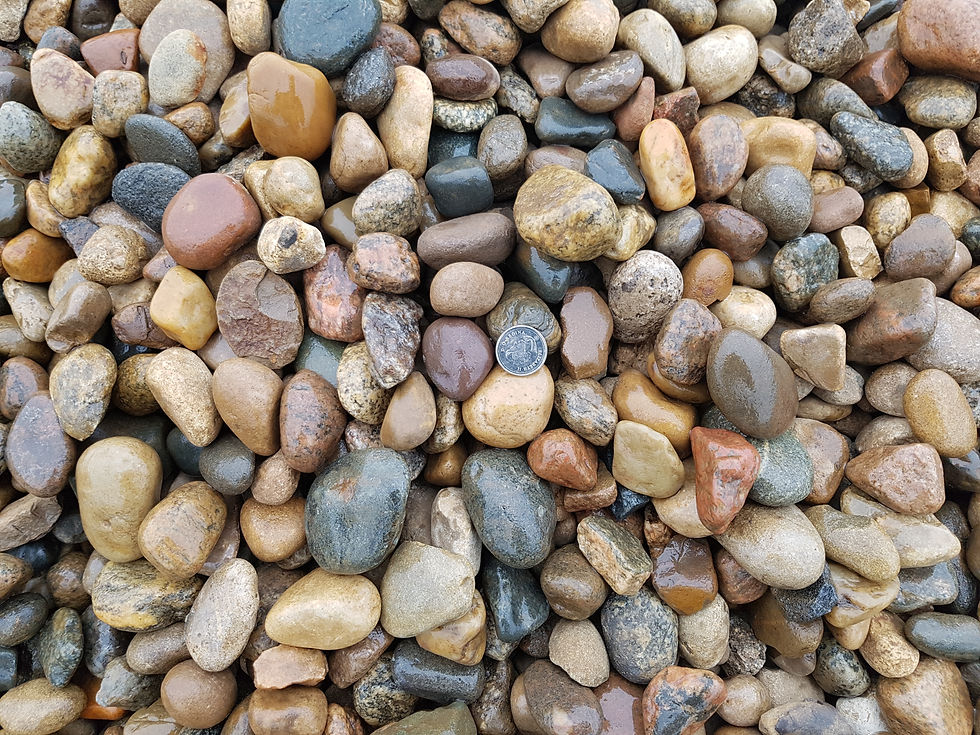What is Rock Weigh?
- Naman Singh
- May 16, 2023
- 3 min read

What is Rock Weight?
The weight of a rock can vary greatly depending on its size, type, and density. There is no single weight value that applies to all stones. Small rocks can weigh several ounces or several pounds, while large rocks can weigh several tons.
To determine the weight of a particular stone, you need to measure its size and density. The volume of a rock can be calculated by multiplying its length, width and height, while density can be obtained by various methods such as measuring its mass and volume or referring to sources. reference.
Once you have the volume and density of the rock, you can calculate its weight using the formula:
Weight = Mass × Density
Remember that a rock's specific gravity can vary greatly depending on factors such as mineral composition, porosity, and moisture content. Therefore, it is best to measure or estimate these values to calculate the correct weight.
How Much Do the Rocks Weigh?
Asking how much a rock weighs is an interesting question as the answer will of course depend entirely on the particular rock you are asking about. I wanted to write this to give a definitive answer to a more complex question than it first appeared. If you're curious to know how much a rock weighs - whatever the size or type of rock you're interested in - you've come to the right place.
On average, a cubic foot of rock weighs 165.2 pounds, but depending on the type of rock, it can weigh between 143.6 and 186.0 pounds. The weight of a rock is determined by its density and volume. The weight of any stone can be approximated using simple volumetric formulas.
Rocks Weight by Type
If you are wondering how much a particular stone weighs, please see the table below. It will cover the most common stones and if you cannot find exactly what you are looking for, chances are a very close alternative will be listed.
For the purposes of this board, I used a theoretical block-shaped rock that measures 1 foot in each direction. I list the average density of each rock in g/cm3 because that is the most commonly used unit for this measurement. Note that the given density is what is called the bulk density, which is the mass of the rock per unit cubic volume, including the pore space. This is in contrast to particle density excluding voids.
The weight of stones can vary depending on their type, as different stones have different densities. Here are some common rocks and their approximate weights per cubic foot (pcf):
Granite: 165 to 175 pcf
Limestone: 140 to 150 pcf
Sandstone: 125 to 150 pcf
Basalt: 145 to 160 pcf
Shale: 145 to 160 pcf
Slate: 175 to 200 pcf
Marble: 160 to 180 pcf
These values are approximate and may vary depending on the composition and specific characteristics of the rock. Also, it's important to note that weights are usually given in pounds per cubic foot (pcf), but you can convert them to other units (such as tons) if needed.
How to Calculate and Estimate the Weight of the Stone?
Just in case the measurements and charts I listed above don't work for you, I will now explain how to measure and approximate the weight of the rock you're interested in. With just one or two simple measurements, by following these instructions you will be able to calculate the weight of the rock with great accuracy.
Of course, the easiest and most reliable way to know how much a stone weighs is to place it on a scale (or carry it with you). Unfortunately, this is not always an option as you may not have a ladder available or the rock is too large.
The weight of a rock depends on two things: density and volume. If you can measure or approximate these two values, you can easily approximate the weight of a stone.
Determine rock type and density
Measure the size of the stone
Calculate the mass of the rock
Measure the Size of the Rock
To measure the size of a rock, you can follow these steps:
Length: Use a tape measure or ruler to measure the longest length of the rockery. It usually ends in a straight line.
Width: Measure the width of the rock at its widest point. This is usually a measurement perpendicular to the length.
Height: Measure the height of the rock from the base to the highest point. If the stone has an irregular shape, you can measure the maximum vertical distance.
Make sure to take accurate measurements by aligning the measuring tool as close to the edges of the stone as possible. It can be helpful to ask a friend to help you steady the rock during the measurement.







Comments